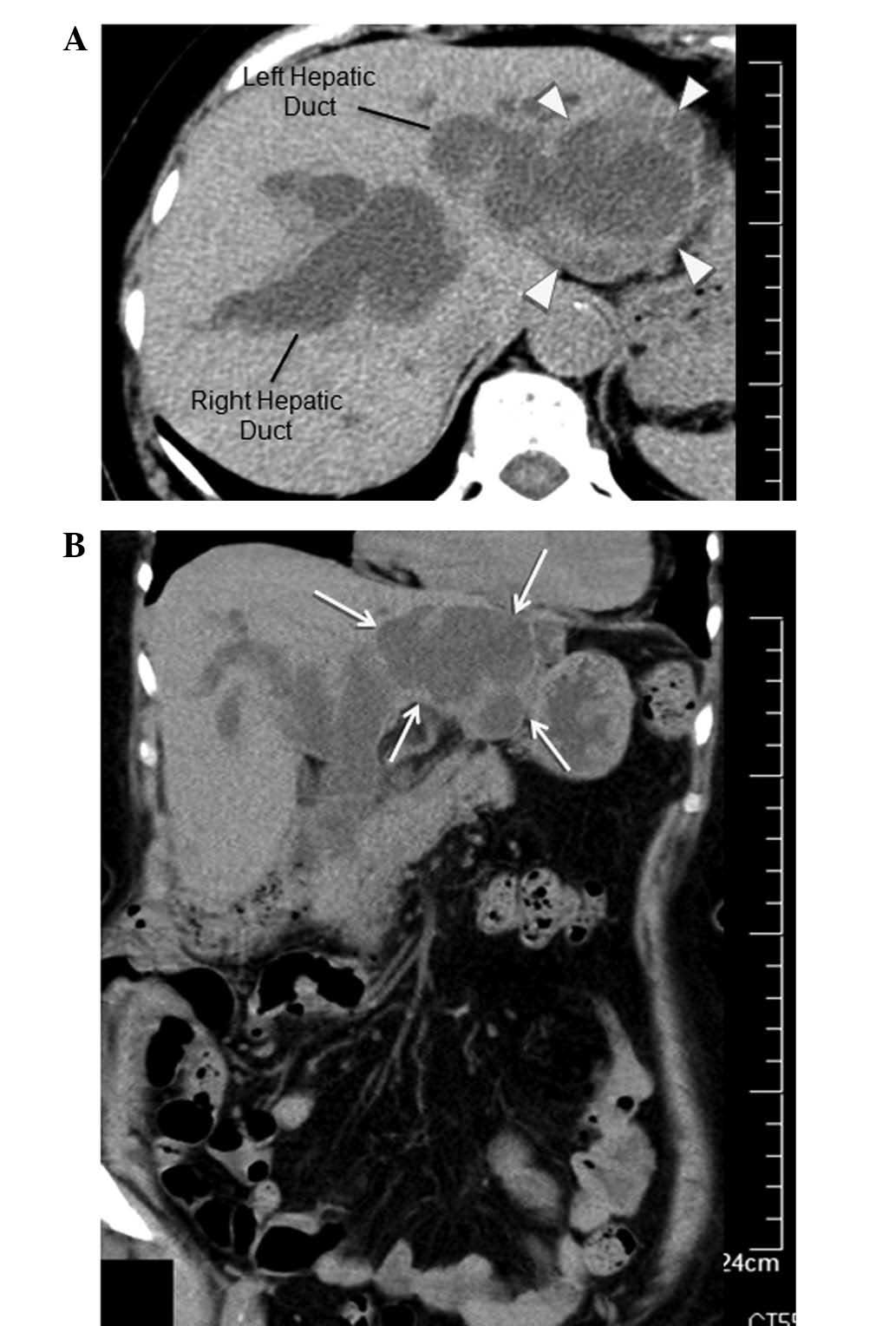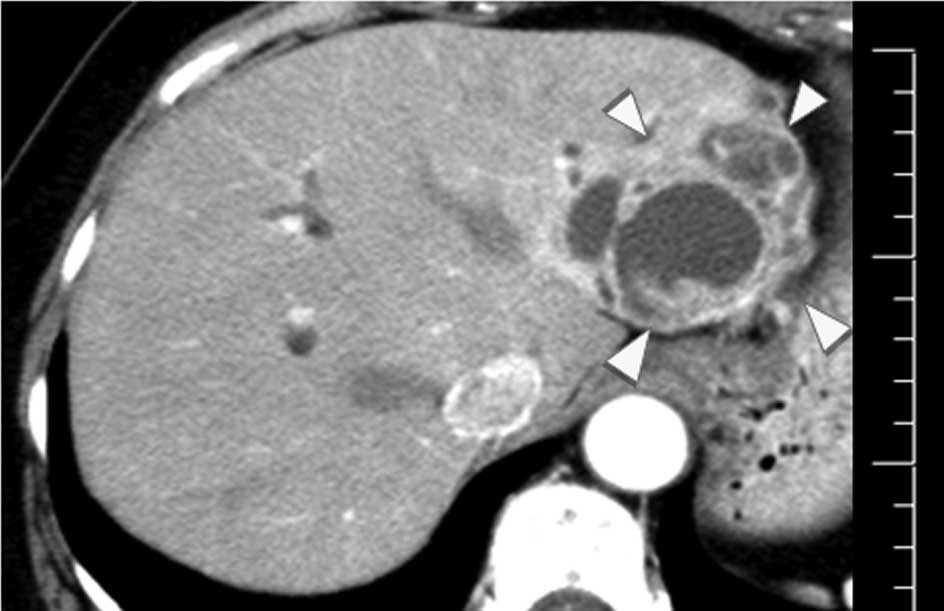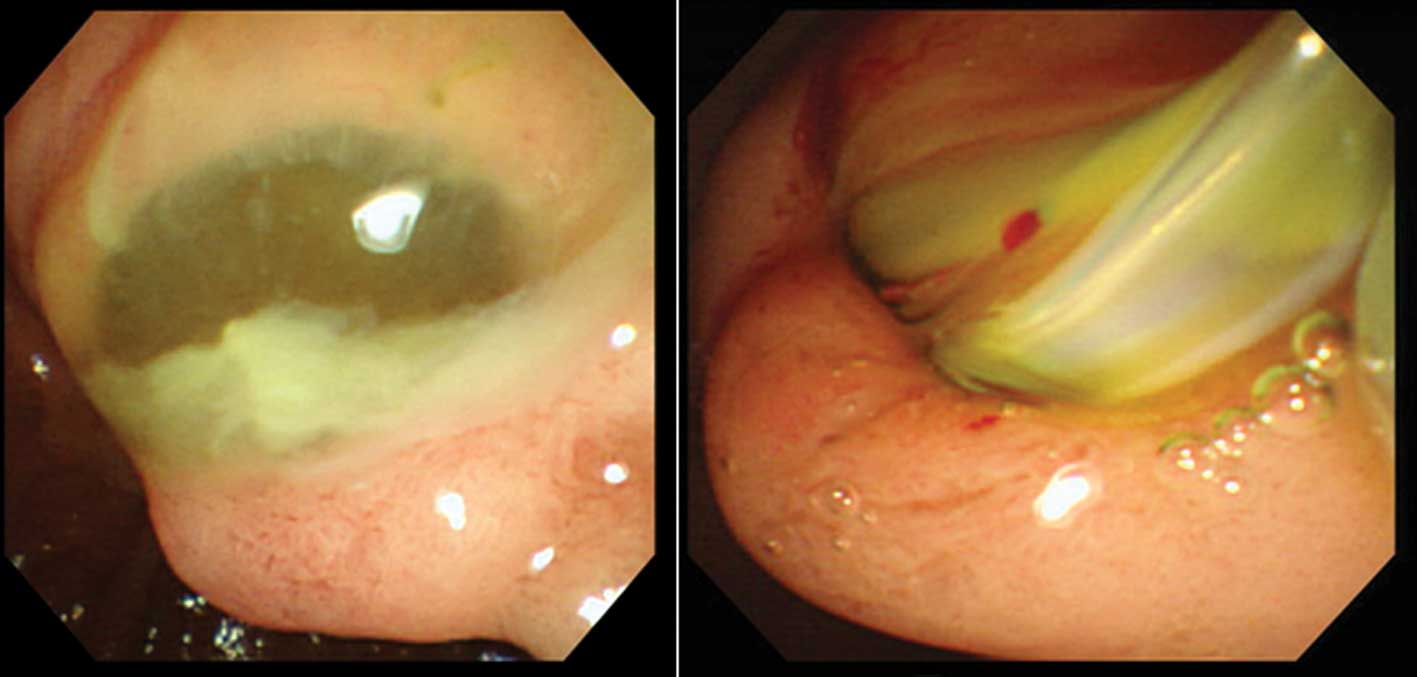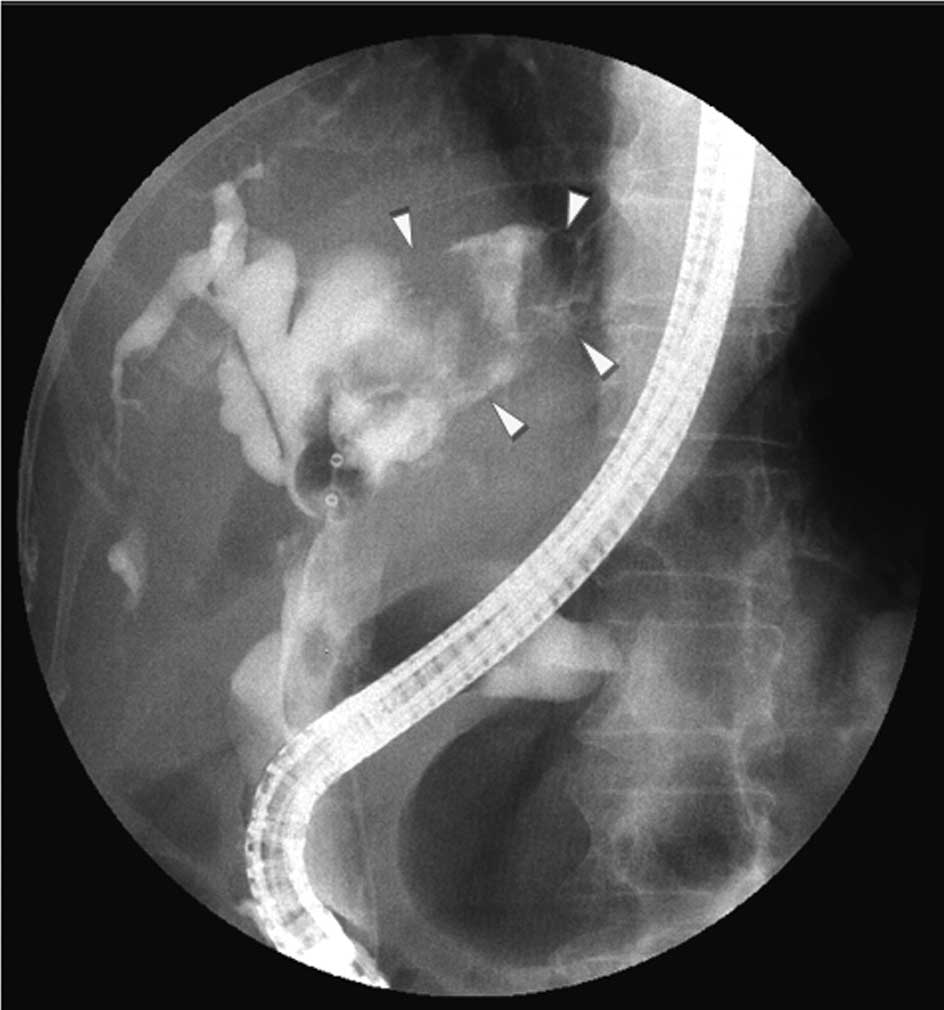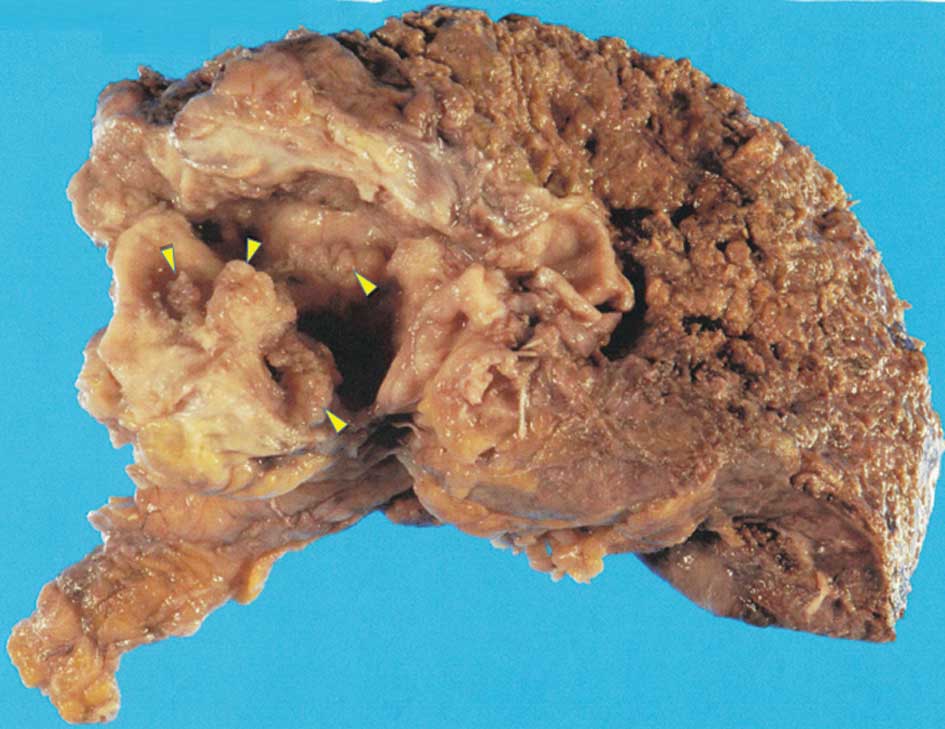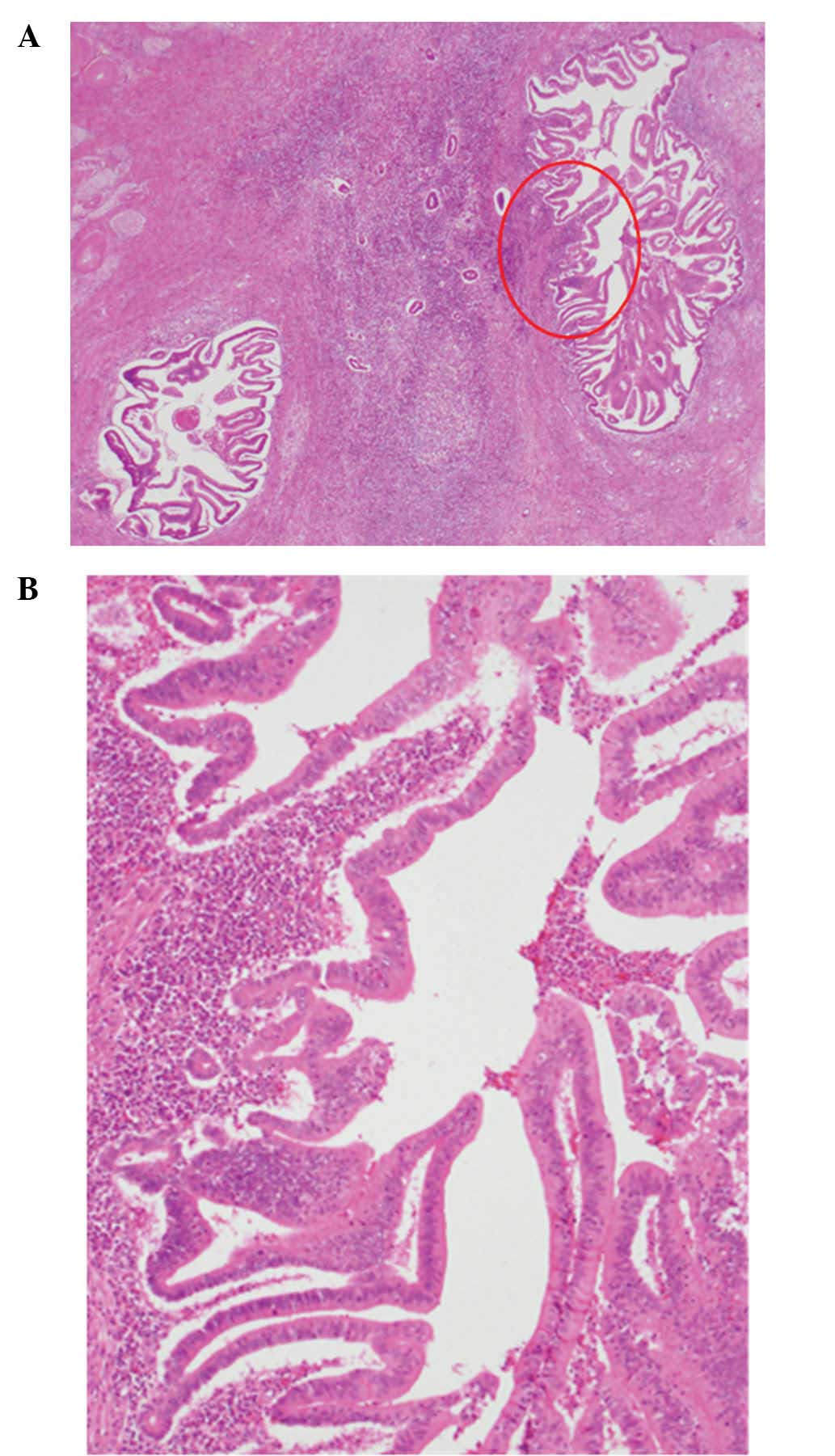A case of branch duct type intraductal papillary neoplasm of the bile duct treated by open surgery after 11 years of follow‑up
- Authors:
- Published online on: July 25, 2013 https://doi.org/10.3892/mco.2013.160
- Pages: 965-969
Metrics: Total
Views: 0 (Spandidos Publications: | PMC Statistics: )
Total PDF Downloads: 0 (Spandidos Publications: | PMC Statistics: )
Abstract
The intraductal papillary neoplasm of the bile duct (IPNB) is a novel disease concept that was recently classified as a biliary cystic tumor by the revised World Health Organization classification. This is the case report of a 70‑year‑old female patient who experienced repeated episodes of obstructive jaundice and cholangitis since 2000, attributed to a mucus‑producing hepatic tumor. Surgery was advised due to the repeated episodes; however, the patient refused. In May, 2011, the patient developed jaundice and fever and was treated with antibiotics. Since there was no improvement, the patient was admitted to the Tokyo Rosai Hospital. Abdominal computed tomography (CT) revealed a 50‑mm cystic mass with an internal septum in the left hepatic lobe. Although the tumor size had remained almost unchanged compared to the initial CT scan performed in 2000, intra‑ and extra‑hepatic bile duct dilation was more prominent on the second CT scan. Following admission, endoscopic retrograde cholangiopancreatography was performed and revealed an expanded papilla of Vater due to a mucous plug. A balloon catheter was inserted into the bile duct to remove the mucous plug, resulting in the drainage of copious amounts of mucus and infected bile. The patient finally consented to surgery and left hepatic lobectomy was performed. Consequently, the diagnosis of low‑grade IPNB was made. branch duct type IPNB, which is characterized by imaging appearance of a cystic mass and slow progression, is attracting increasing attention. In the present case, a cystic mass was identified in the left hepatic lobe, with no significant change in size after 11 years of follow‑up, leading to the diagnosis of branch duct type IPNB. Considering the fact that IPNB is usually treated surgically at the time of diagnosis, the present case, due to the long‑term follow‑up, provides valuable insight into the natural history of the tumor.



